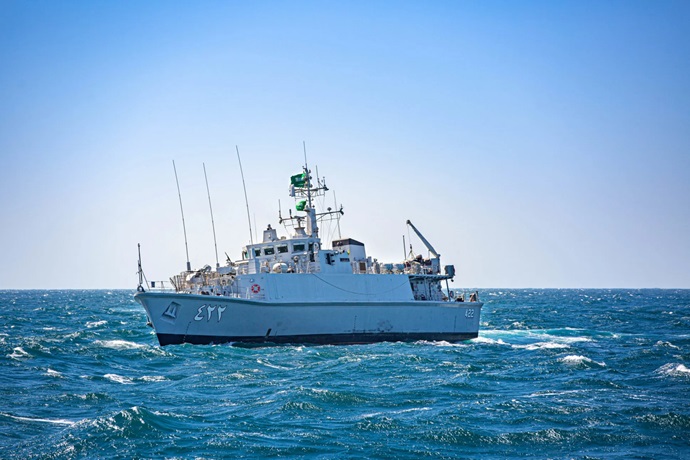By Eleonora Ardemagni
Since the mid-2010s, the Red Sea has been at the center of Saudi Arabia’s foreign policy due to the interplay of domestic, regional, and international dynamics. Economic projects under Vision 2030 have reflected Riyadh’s goals in the Red Sea and how the kingdom imagines the future of the region connecting the Arabian Peninsula with Africa. However, while Saudi Arabia has an economic vision for the Red Sea, it struggles to shape a comprehensive, cross-regional strategy to mitigate expanding insecurity from the Red Sea to the Bab el-Mandeb strait and Gulf of Aden.

While Saudi Arabia’s economic vision requires a stable region to ensure its sustainability and success, an economy-centered focus is insufficient to address the various factors causing instability in the Red Sea that have long been present but have been exacerbated by the Gaza war. Although Saudi Arabia has improved its defense and maritime security capabilities, the lack of political coordination with and among the countries bordering the Red Sea reveals Saudi Arabia’s lack of a comprehensive strategy.
Economy-First Vision for the Red Sea
In recent years, Saudi Arabia has viewed the Red Sea through the lens of economic investment and infrastructure. Many of the projects related to Vision 2030 are on Saudi Arabia’s western coast: the futuristic city of Neom and its expanded port as well as the resorts of the Red Sea project; the modernization of the Jeddah port and King Fahd Industrial Port at Yanbu; and Saudi Aramco’s plans to expand the oil capacity of Petroline, the pipeline connecting the Abqaiq fields with the Yanbu terminal.
The economy has also been at the center of Saudi Arabia’s international relations regarding the Red Sea region, complementing Saudi investments on the kingdom’s western cost. For instance, Saudi investments in Egypt, across various sectors, reached $6.3 billion in 2023. Riyadh is also a top investor in the Horn of Africa, especially Ethiopia, Sudan, Somalia, and Djibouti. The quiet normalization process between Saudi Arabia and Israel (stalled by the Gaza war), also offers significant opportunity for cooperation between the two countries that will presumably have a notable economic component.
Increasing Insecurity in the Broader Red Sea Region
Saudi Arabia needs a stable Red Sea to successfully implement economic reforms. Not by chance, the director general of the Saudi Border Guard (which also has maritime duties) is a board member of the Saudi Red Sea Authority, established in 2021 to regulate coastal marine tourism in the area. For the kingdom, Red Sea stability helps support this critical economic development, but it also has implications for national security and border defense, interests that are put at risk when the broader region is increasingly plagued by multiple security threats: Many are directly or indirectly related to Yemen (its war and institutional fragmentation), and they have been compounded by the regional fallout from the Gaza war.
Since the 2015 Saudi-led military intervention in Yemen, the Houthis have frequently targeted Saudi territory and Riyadh’s maritime activity; since the 2022 national truce in Yemen (that has since expired) as well as the October 7, 2023 Hamas attack on Israel and subsequent Israeli military operation, the Iranian-backed Houthis have instead turned to attacking commercial shipping vessels “in solidarity with Gaza” and Western navies deployed as part of multinational coalitions to promote maritime security. The commander overseeing the European Union’s Operation Aspides, Rear Admiral Vasileios Gryparis, stated that “From the launch of the Operation Aspides on February 19, 2024 until now, the threat level remains the same,” with the Houthis still carrying out varied attacks.
The Houthi attacks targeting shipping vessels greatly affect Egypt, as trade routes now often bypass the Suez Canal to avoid the southern Red Sea flashpoint, reducing Egyptian revenue from the Suez Canal by around 50% from January to late February. Moreover, with international naval operations now focused on the southern Red Sea, piracy is rising off the Horn of Africa, a problem exacerbated by instability in Somalia.
The war in Sudan, which has more than 450 miles of Red Sea coast, adds another layer of uncertainty. The main coastal city, Port Sudan, has been largely spared from the conflict thus far, but clashes erupted there in September 2023 and could again. Moreover, an agreement between Ethiopia and Somaliland signed in January – under which Ethiopia would be allowed to build a port facility in Somaliland and would possibly recognize Somaliland’s independence – angered Somalia, sparking tensions.
Smuggling is another source of Red Sea instability. According to a 2023 United Nations report, there is a closely coordinated weapons smuggling network between Yemen and Somalia and Yemen and Sudan, with armed groups “receiving weapons from a common source,” namely Iran, helping fuel regional conflicts. Moreover, traffickers regularly attempt to smuggle drugs, such as Captagon, into Saudi Arabia through the ports of Duba and Jeddah.
Read more: Saudi Arabia Has a Red Sea Vision, Not Yet a Strategy
Source: The Arab Gulf States Institute in Washington (AGSIW)

Leave a Reply